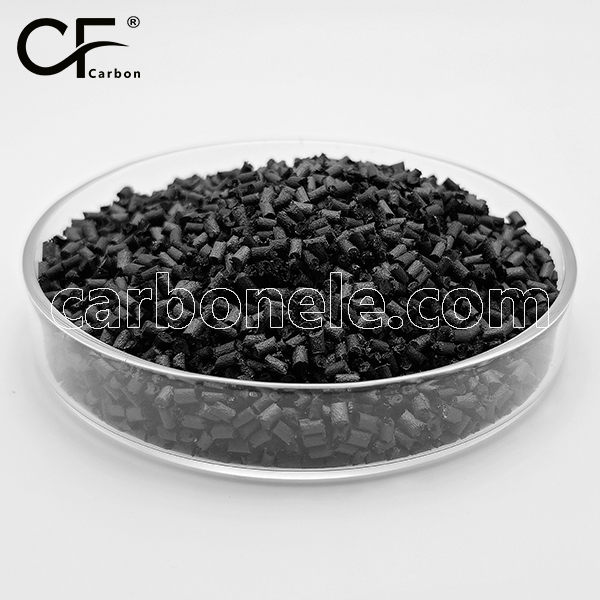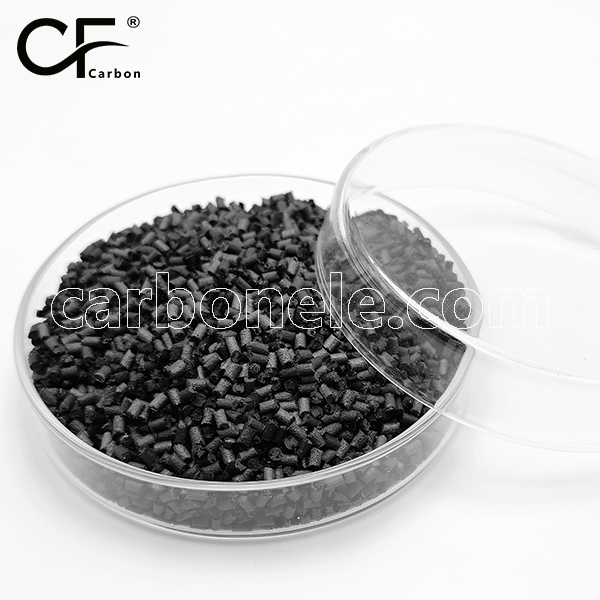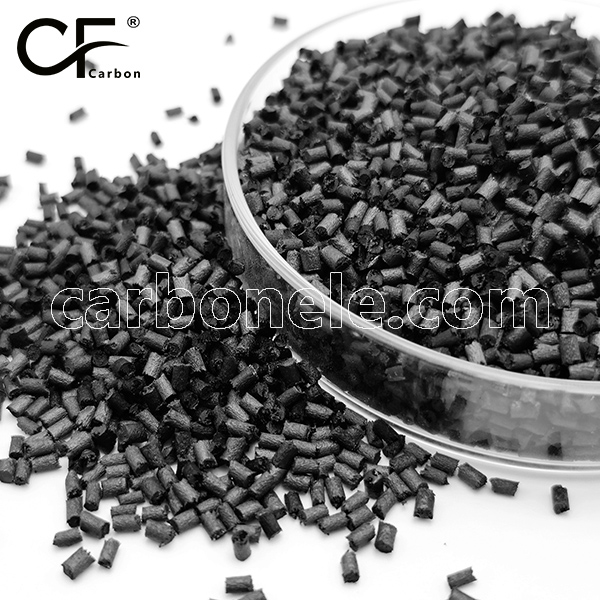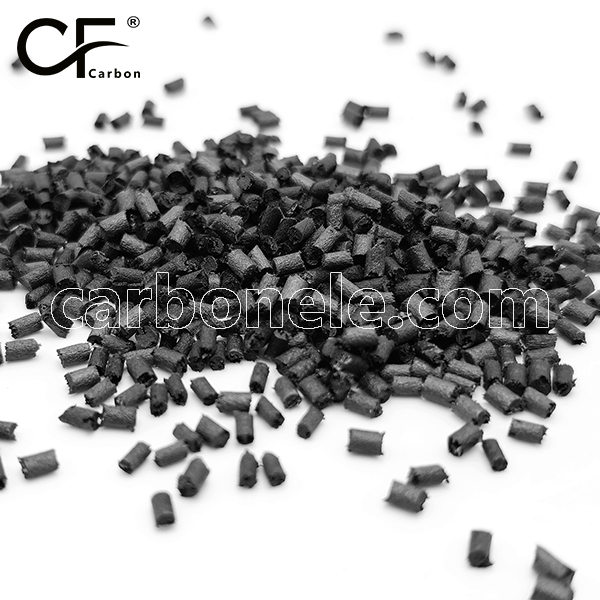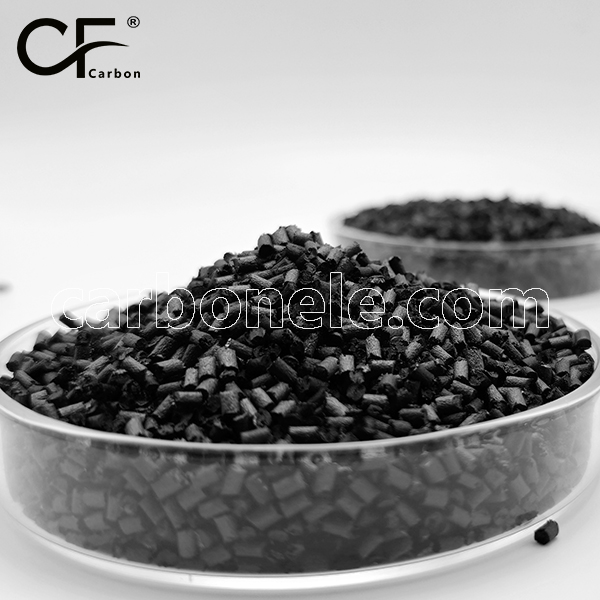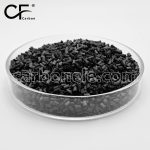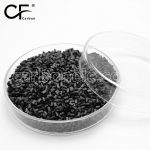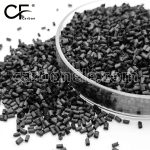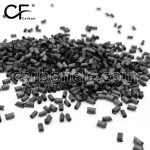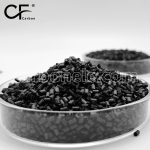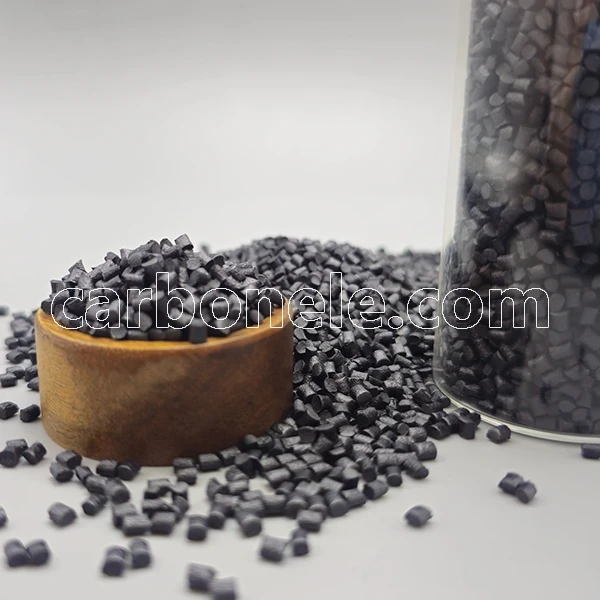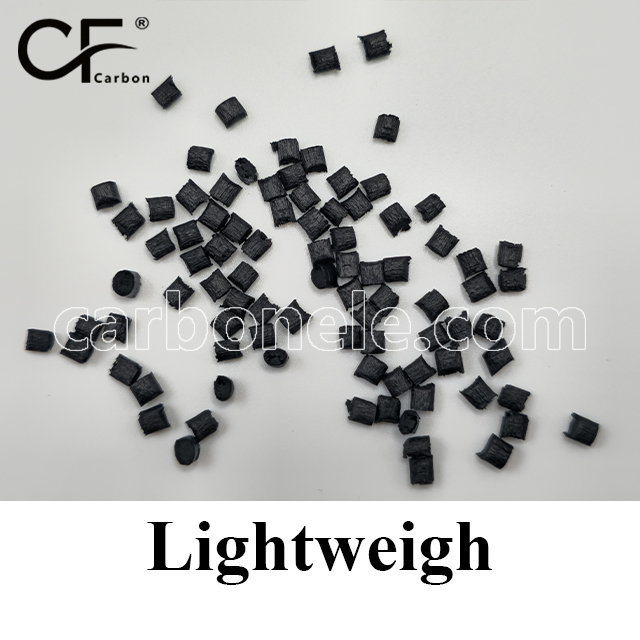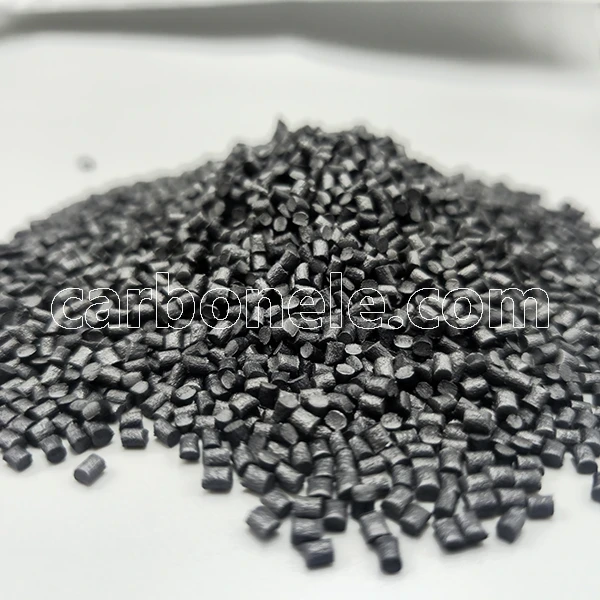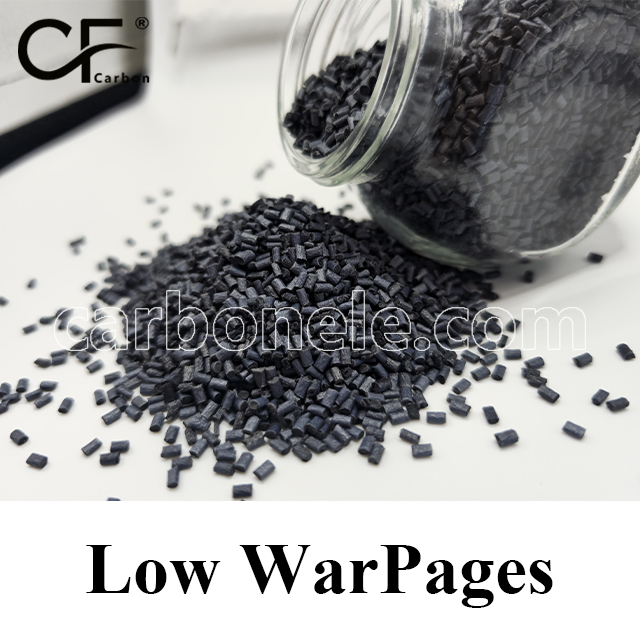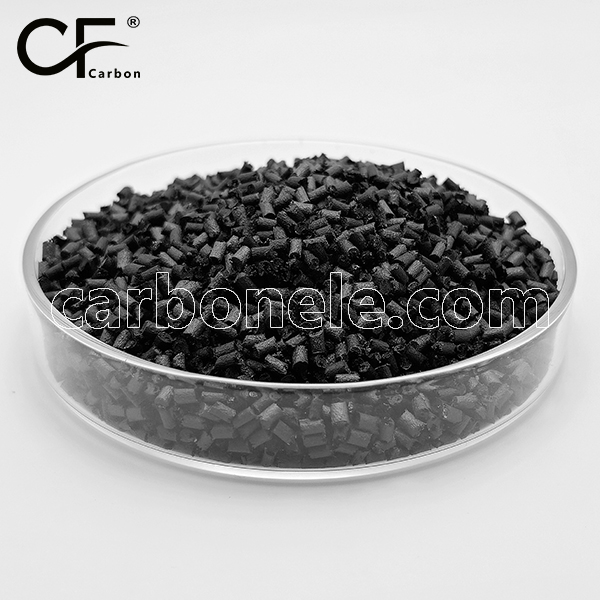The friction coefficient of pure PEI typically ranges between 0.3 and 0.4, depending on the specific surface and conditions of use. When carbon fiber is added to create PEI-CF, the friction coefficient is generally lower due to the increased wear resistance and lubrication properties provided by the carbon fibers. For PEI-CF, the coefficient of friction typically ranges from 0.2 to 0.3, depending on the carbon fiber content and surface conditions.The addition of carbon fibers reduces friction, improves wear resistance, and enhances the material’s performance in high stress, abrasive environments.

Overlooked Heat Limits? PEI-CF10 Handles What Others Can’t
Discover how PEI-CF10 solves thermal distortion and structural failure in high-heat applications like electronics fixtures, aerospace tooling, and more.
- Model number: PEI-CF-BCA1
- Matrix Resin: Polyethyleneimine (PEI)
- Reinforcing Filler: Carbon fiber
- Appearance: Granules
- Grade: Injection/extrusion grade
- Packaging: 25kgs/bag
Overlooked Heat Limits? PEI-CF10 Handles What Others Can’t
PEI-CF10 is not just a high-performance thermoplastic — it is a material built to withstand what standard plastics cannot. In environments where heat, pressure, and mechanical stress come together, PEI-CF10 delivers consistent, reliable performance. If your parts are failing due to heat distortion or structural fatigue, it is time to consider the serious advantages of PEI-CF10.
Why PEI-CF10 Matters in Thermal-Intensive Environments
Standard plastics often begin to soften or lose shape under continuous high heat. In industrial settings, this can lead to costly part failures, downtime, and compromised safety. PEI-CF10 is reinforced with carbon fiber, enhancing its ability to maintain dimensional stability under thermal stress. This makes it ideal for parts exposed to continuous heat or intermittent thermal spikes.
PEI-CF10 in Real Use – Electronics Manufacturing Fixture
Consider the use of PEI-CF10 in an electronics manufacturing fixture. During PCB soldering, plastic fixtures must endure constant heat without warping. Traditional plastics deform, lose alignment, and compromise the precision needed in automated production. PEI-CF10, however, retains its shape and rigidity throughout repeated thermal cycles, allowing for consistent positioning and reducing fixture replacement frequency.
Thermal Resistance Without Compromise
Where some materials require trade-offs between heat resistance and mechanical strength, PEI-CF10 offers both. Thanks to its carbon fiber reinforcement, this material is capable of handling high thermal loads without cracking or bending. The result is a longer lifespan for components and less maintenance in demanding applications.
PEI-CF10 Outperforms in Structural Applications
Thermal performance is only one side of the story. PEI-CF10 also provides excellent structural integrity. The carbon fiber content improves stiffness and reduces flex, which is essential in load-bearing applications.
Enhanced Rigidity in Compact Component Design
Design engineers often face limitations in wall thickness or reinforcement options. PEI-CF10 allows for thinner designs while still maintaining strength, enabling compact, lightweight parts in structural applications such as brackets, enclosures, and precision alignment tools.
Less Warping, More Reliability
One of the most common causes of part failure is residual stress-induced warping after processing or under use. PEI-CF10’s stability means parts retain their original shape and tight tolerances even after repeated cycles of mechanical and thermal stress.
PEI-CF10 Is Ready for High-Precision Manufacturing
Whether you are machining complex parts or using injection molding, PEI-CF10 offers excellent processability. Its dimensional stability translates directly into better quality control, particularly for parts requiring tight tolerances or consistent assembly fit.
Suitable for 3D Printing and Machining
PEI-CF10 performs well across various production techniques. In 3D printing, it resists delamination and curling, while in CNC machining, it offers clean edges and maintains tolerances without post-warping.
Trusted in Aerospace and Automotive Prototyping
Because of its unique mix of thermal and mechanical properties, PEI-CF10 is commonly used in aerospace jigs, automotive prototype parts, and robotic tooling. These applications demand repeatable performance under environmental stress — and that is exactly where PEI-CF10 excels.
Who Should Use PEI-CF10?
If you work in industries where thermal resistance, mechanical strength, and long-term reliability matter, PEI-CF10 is the solution you have been looking for. It is especially recommended for:
-
Electronics manufacturing and testing
-
Aerospace fixture and tooling
-
Automotive under-hood components
-
High-temperature machinery housings
-
Custom parts exposed to cyclic heating
Conclusion – Stop Accepting Thermal Failure
Many engineers and manufacturers overlook the subtle ways that heat affects material performance. Warping, creeping, and stress failure often occur slowly but consistently. PEI-CF10 is your defense against these silent killers. With its carbon fiber reinforcement and heat-resistant backbone, this material is built to handle what others cannot.
If you want to get more information about PEI-CF60, you can visit our Youtube.
Strength between PEI and PEI-CF
PEI offers strong mechanical properties, excellent thermal stability, and chemical resistance for moderate duty applications. PEI-CF, with added carbon fiber, significantly enhances stiffness, wear resistance, and mechanical strength, making it ideal for high performance environments that require superior strength and durability under stress.
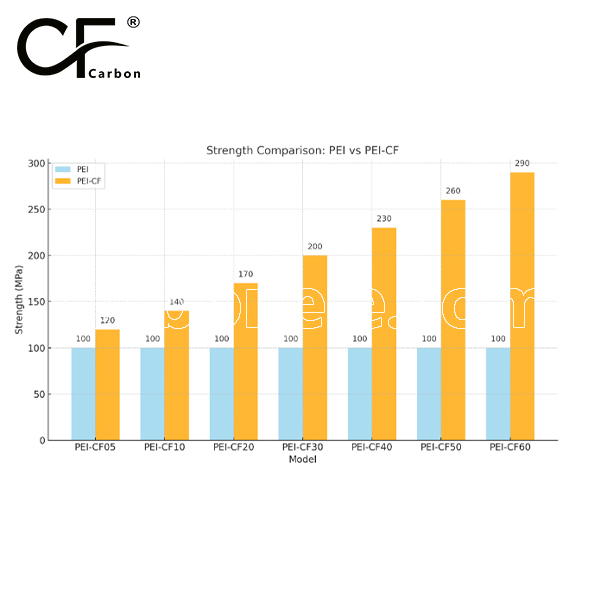
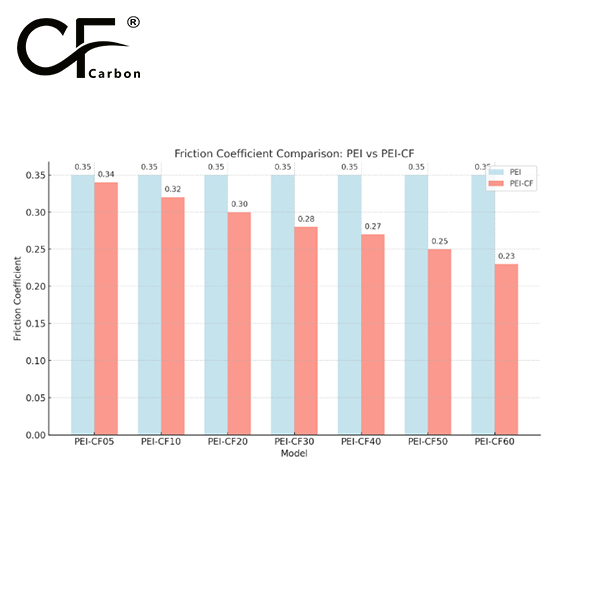

Frequently Asked Questions
Carbon (Xiamen) New Material Co., Ltd. aims to provide buyers with "one-stop" worry-free high-quality services. Here you can find all information about carbon fiber engineering plastics. If you still have questions, please send us an email for consultation!
-
How can I contact the manufacturer of a product that interests me?
When you find a product you are interested in, you can contact the manufacturer directly by sending an email and we will get back to you as soon as possible.
-
How do I find the products that interest me?
All you need to do is enter the keyword, product name in the search window and press the Enter key on your keyboard. Your search results page will then be displayed. You can also search within the product category pages on the home page. Each category is divided into subcategories, allowing you to refine your search and find products that interest you.
-
Where will I find a buying guide?
Please contact our after-sales service directly and we will provide you with a comprehensive operating guide.
-
What are CF Reinforced Thermoplastic Composites?
CF Reinforced Thermoplastic Composites are materials where carbon fibers are incorporated into a thermoplastic matrix. They combine the strength and stiffness of carbon fibers with the processability and recyclability of thermoplastics. For instance, they are used in automotive parts like bumper beams.
-
What are the benefits of CF Reinforced Thermoplastic Composites over traditional composites?
The key benefits include faster production cycles, easier recyclability, and better impact resistance. They also offer design flexibility. An example is in the manufacturing of consumer electronics casings where complex shapes can be achieved more easily.
-
How are CF Reinforced Thermoplastic Composites processed?
Common processing methods include injection molding, extrusion, and compression molding. Injection molding is widely used for mass production. For example, in the production of small components for the medical industry.
-
What industries use CF Reinforced Thermoplastic Composites?
They are utilized in aerospace, automotive, medical, and sports equipment industries. In aerospace, they can be found in interior components. In the medical field, they might be used in prosthetics.
-
How does the carbon fiber content affect the properties of the composites?
Higher carbon fiber content generally leads to increased strength and stiffness but may reduce ductility. A moderate content is often balanced for specific applications. For example, a higher content might be preferred in structural parts of a race car.
-
What are the challenges in using CF Reinforced Thermoplastic Composites?
Challenges include higher material costs, complex processing equipment requirements, and ensuring uniform fiber dispersion. Issues with adhesion between the fibers and the matrix can also arise. An example is in achieving consistent quality in large-scale production.







